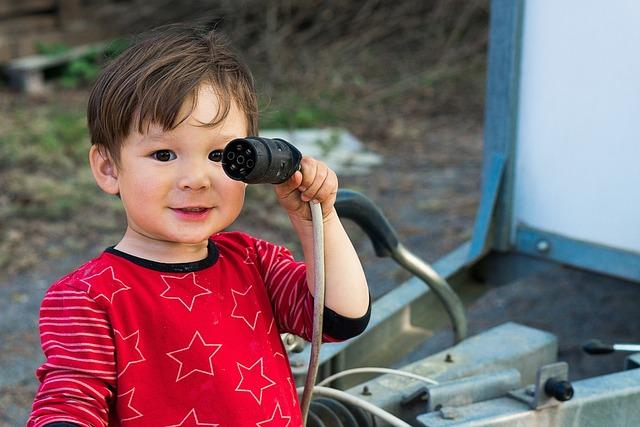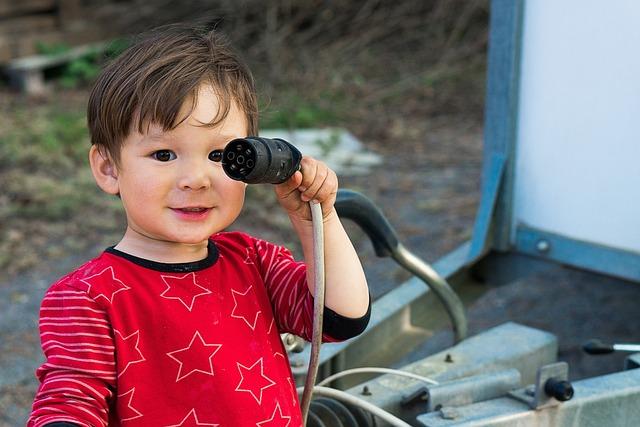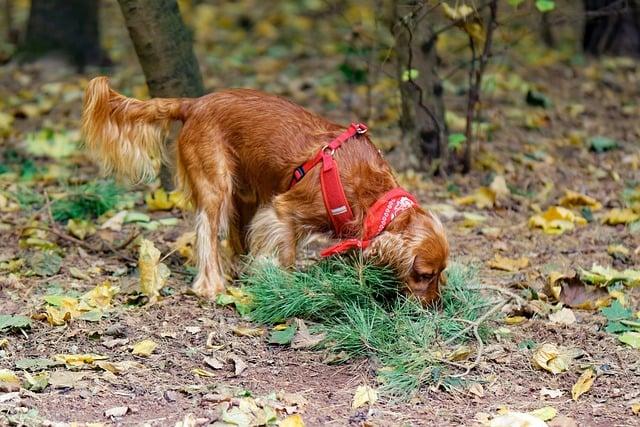When Max, a spirited golden retriever, began digging up the garden and stealing shoes, his owner, Sarah, felt overwhelmed. Instead of scolding him, she sought help. She discovered that consistency and positive reinforcement were key. By rewarding Max for good behavior and redirecting his energy with engaging activities, Sarah transformed her mischief-maker into a well-behaved companion. If you’re struggling with a misbehaving dog, remember: patience, understanding, and a structured approach can turn chaos into harmony. Your dog deserves it!
Contents
- Understanding the Root Causes of Misbehavior in Dogs
- Effective Training Techniques to Curb Unwanted Behaviors
- The Importance of Consistency and Routine in Dog Training
- Building a Strong Bond Through Positive Reinforcement Strategies
- Q&A
Understanding the Root Causes of Misbehavior in Dogs
To effectively address misbehavior in dogs, it is crucial to delve into the underlying factors that contribute to such actions. Many pet owners may overlook the significance of understanding their dog’s emotional and physical needs. A dog that exhibits destructive behavior, excessive barking, or aggression may be expressing discomfort, anxiety, or boredom. Recognizing these root causes is the first step toward implementing effective solutions.
One common reason for misbehavior is a lack of proper socialization. Dogs that have not been exposed to various environments, people, and other animals may react unpredictably when faced with new experiences. This can lead to fear-based behaviors, such as growling or snapping. Ensuring that your dog has ample opportunities for positive social interactions can significantly reduce these issues. Consider the following strategies:
- Enroll your dog in obedience classes.
- Arrange playdates with well-behaved dogs.
- Expose your dog to different environments gradually.
Another critical factor is the need for mental and physical stimulation. Dogs are naturally energetic and intelligent creatures that require regular exercise and engaging activities to thrive. Without sufficient outlets for their energy, they may resort to mischief as a way to cope with pent-up frustration. To combat this, incorporate a variety of activities into your dog’s routine, such as:
- Daily walks or runs.
- Interactive toys and puzzles.
- Training sessions that challenge their minds.
Lastly, health issues can often manifest as behavioral problems. Pain, discomfort, or illness can lead to changes in a dog’s temperament, causing them to act out in ways that are uncharacteristic. Regular veterinary check-ups are essential to rule out any medical conditions that may be influencing your dog’s behavior. If you notice sudden changes in your dog’s actions, consulting a veterinarian should be a priority. By addressing these root causes, you can foster a healthier, more balanced relationship with your canine companion.
Effective Training Techniques to Curb Unwanted Behaviors
When it comes to managing unwanted behaviors in dogs, employing effective training techniques is crucial. One of the most successful methods is **positive reinforcement**, which involves rewarding your dog for displaying desirable behaviors. This can include treats, praise, or playtime. By consistently reinforcing good behavior, your dog will learn to associate positive outcomes with actions you want to encourage, making them more likely to repeat those behaviors in the future.
Another powerful technique is **redirecting undesirable behaviors**. Instead of simply scolding your dog for misbehavior, provide an alternative action that is acceptable. For example, if your dog is chewing on furniture, redirect their attention to a chew toy. This not only helps to curb the unwanted behavior but also teaches your dog what is appropriate to chew on. Consistency is key; always guide your dog towards the right choice to reinforce the lesson.
Incorporating **structured routines** into your dog’s daily life can also significantly reduce misbehavior. Dogs thrive on predictability, and a well-defined schedule for feeding, walks, and playtime can help them feel secure and less anxious. When dogs know what to expect, they are less likely to engage in disruptive behaviors out of boredom or frustration. Make sure to include regular training sessions in this routine to keep their minds engaged and focused.
Lastly, consider the importance of **socialization** in curbing unwanted behaviors. Exposing your dog to different environments, people, and other animals can help them become more adaptable and less reactive. Arrange playdates with other dogs or take them to dog parks, ensuring these experiences are positive and supervised. A well-socialized dog is often more confident and less prone to misbehaving, as they learn to navigate various situations without fear or aggression.
The Importance of Consistency and Routine in Dog Training
Establishing a consistent training routine is crucial for shaping your dog’s behavior. Dogs thrive on predictability, and when they know what to expect, they are more likely to respond positively to commands. By incorporating regular training sessions into your daily schedule, you create a structured environment that helps your dog understand what is expected of them. This consistency not only reinforces good behavior but also builds a strong bond between you and your pet.
Incorporating a routine into your training can significantly enhance your dog’s learning experience. When commands and cues are practiced at the same time each day, your dog begins to associate specific actions with particular outcomes. This can include rewarding them with treats, praise, or playtime when they successfully follow a command. Over time, this repetition solidifies their understanding and encourages them to repeat the desired behaviors. Consider the following elements to include in your routine:
- Set specific training times: Choose a time of day when you and your dog are most alert and focused.
- Use consistent commands: Stick to the same words and phrases for each command to avoid confusion.
- Incorporate varied environments: Practice in different locations to help your dog generalize their training.
Moreover, consistency in your responses to misbehavior is equally important. If you allow certain behaviors one day but correct them the next, your dog will become confused about what is acceptable. By maintaining a firm and consistent approach, you help your dog learn boundaries and understand the consequences of their actions. This clarity is essential for effective training and can lead to a more harmonious relationship between you and your furry companion. Remember, patience and persistence are key components in this journey, and a well-structured routine will pave the way for lasting behavioral change.
Building a Strong Bond Through Positive Reinforcement Strategies
Establishing a connection with your dog is essential for effective training, and positive reinforcement is one of the most powerful tools at your disposal. By rewarding desirable behaviors, you not only encourage your dog to repeat those actions but also strengthen the bond you share. This method fosters trust and respect, creating a harmonious relationship built on understanding and cooperation.
To implement positive reinforcement effectively, consider the following strategies:
- Immediate Rewards: Timing is crucial. Offer treats, praise, or playtime immediately after your dog exhibits the desired behavior to reinforce the connection between the action and the reward.
- Consistency: Use the same commands and rewards consistently. This helps your dog understand what is expected and reduces confusion, making training more effective.
- Variety of Rewards: Keep your dog engaged by varying the types of rewards. Some dogs respond better to treats, while others may prefer toys or affection. Tailoring rewards to your dog’s preferences can enhance motivation.
- Gradual Progression: Start with simple commands and gradually increase the difficulty. Celebrate small victories along the way to maintain your dog’s enthusiasm and confidence.
Incorporating positive reinforcement into your training routine not only addresses misbehavior but also promotes a positive learning environment. When your dog feels encouraged and appreciated, they are more likely to respond positively to your guidance. This approach transforms training sessions into enjoyable experiences, making it easier for both you and your dog to navigate challenges together.
Moreover, positive reinforcement can help mitigate behavioral issues by redirecting your dog’s focus. Instead of punishing unwanted behaviors, you can teach them alternative actions that are more acceptable. For instance, if your dog jumps on guests, you can reward them for sitting calmly instead. This method not only resolves the issue but also empowers your dog to make better choices, reinforcing their learning and your bond.
Q&A
-
What are the first steps to take when my dog misbehaves?
Start by identifying the specific behavior that is problematic. Observe your dog to understand the triggers and context of the misbehavior. Consistency is key; ensure all family members respond to the behavior in the same way. Use positive reinforcement to encourage good behavior, rewarding your dog when they follow commands or behave appropriately.
-
How can I effectively discipline my dog?
Discipline should focus on redirecting your dog’s behavior rather than punishment. Use a firm but calm voice to correct unwanted actions. Implement time-outs by removing your dog from the situation for a brief period. Always follow up with praise when your dog exhibits the desired behavior to reinforce positive actions.
-
Should I seek professional help for my dog’s behavior issues?
If your dog’s misbehavior persists despite your efforts, it may be beneficial to consult a professional dog trainer or behaviorist. They can provide tailored strategies and insights based on your dog’s specific needs. Early intervention can prevent more serious behavioral issues from developing.
-
How important is socialization in controlling a misbehaving dog?
Socialization is crucial for a well-behaved dog. Exposing your dog to various environments, people, and other animals helps reduce anxiety and fear, which can lead to misbehavior. Regular socialization can improve your dog’s confidence and adaptability, making them less likely to act out in unfamiliar situations.
controlling a misbehaving dog requires patience, consistency, and the right techniques. By implementing positive reinforcement and establishing clear boundaries, you can foster a harmonious relationship with your furry friend. Take the first step today!

大家好,我是彼得潘,專業的手法身體治療師。我喜歡探索和研究各種主題,並透過與人工智慧的合作分享專業、實用、有趣的文章。我們定期進行人工審核,以確保內容的準確性。如果您發現文章中有任何不準確的地方,請隨時與我們聯繫,我們會及時糾正。您可以透過 [email protected] 與我們聯繫。



